
Roots
In every strand of textured hair resides a lineage, a chronicle of sun-drenched landscapes and ancestral ingenuity. This living archive, stretching back across continents and generations, whispers secrets of care and protection, lessons forged in the very crucible of existence. For Black and mixed-race communities, hair has always been more than mere biological filament; it functions as a profound cultural touchstone, a canvas for expression, and a resilient guardian of identity. Our exploration of how head coverings shield textured hair from sun damage begins here, at the elemental origins, where biology intertwines with timeless traditions to illuminate a deeper understanding of ancestral wisdom and modern science.
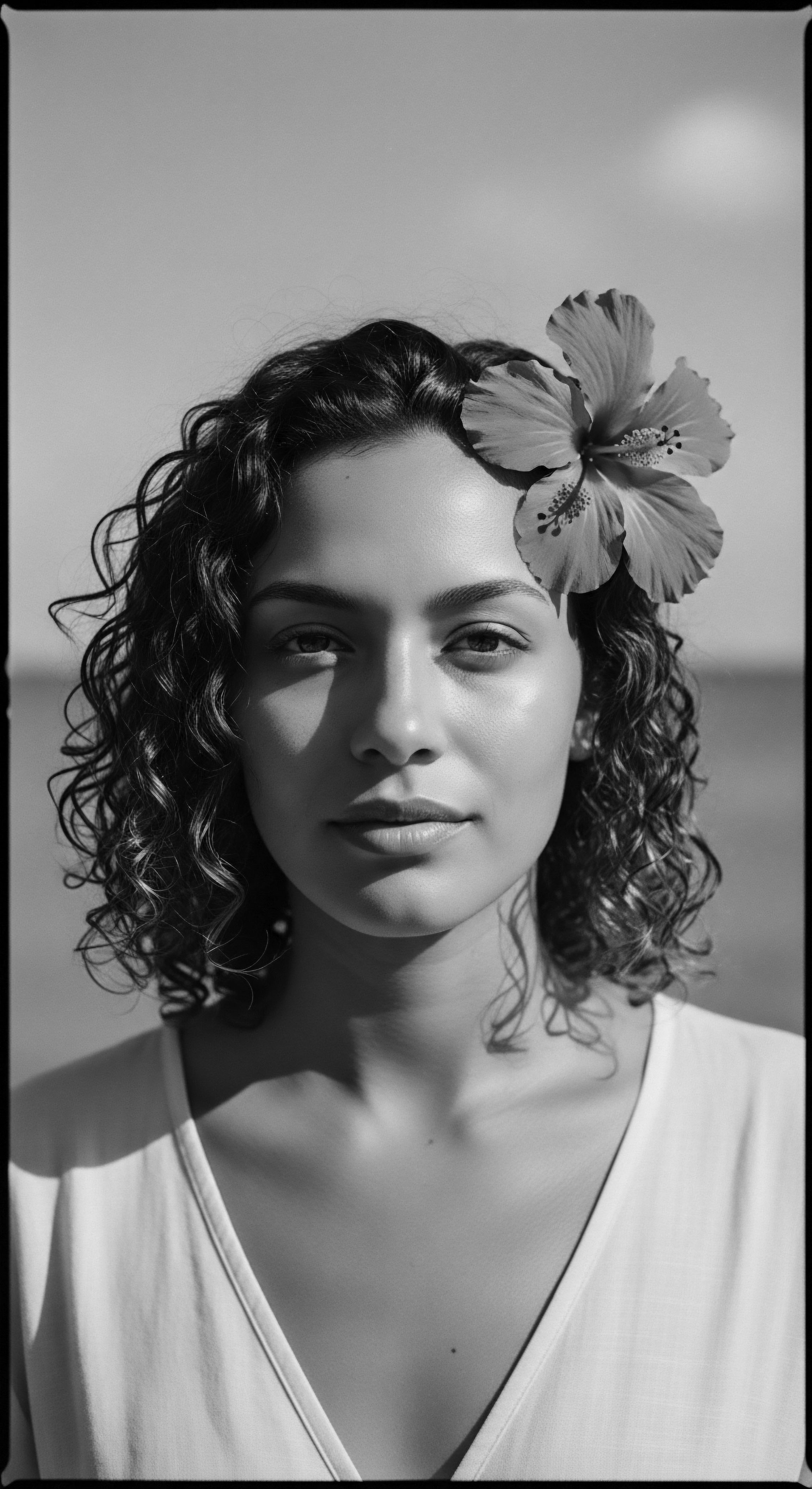
The Architecture of Textured Hair
Textured hair, with its characteristic coils, curls, and waves, possesses a unique anatomical composition that influences its interaction with environmental stressors, including the sun’s omnipresent light. Unlike straight hair, the elliptical cross-section of textured hair strands, along with the varying angles at which they emerge from the scalp, creates inherent characteristics affecting moisture retention and susceptibility to external factors. The cuticle, the outermost protective layer, consists of overlapping scales. In textured hair, these scales may be more raised, offering a less smooth surface than straight hair.
This structure influences how light interacts with the hair shaft. Melanin, the pigment that gives hair its color, also acts as a natural shield against ultraviolet radiation. Darker hair, rich in eumelanin, generally exhibits greater photoprotection than lighter hair, which contains more pheomelanin.
UV radiation, specifically UVA and UVB, triggers photochemical degradation of hair proteins, especially keratin, and can degrade hair pigment. UVA penetrates deeper into the hair cortex, causing color changes, while UVB primarily affects the cuticle and leads to protein loss. This assault results in dryness, reduced strength, and a rough texture, ultimately compromising the hair’s integrity. For textured hair, already predisposed to dryness due to its structural design, such damage can be particularly detrimental.
The coiled nature of these strands means that natural oils from the scalp have a more challenging journey distributing down the hair shaft, leaving the ends particularly vulnerable to environmental drying and UV exposure. Head coverings intervene as a direct physical barrier, a fundamental form of protection echoing ancestral foresight.
The intrinsic helical structure of textured hair speaks to resilience, yet its unique design also invites specific considerations for solar protection.

Sunlight’s Impact on Hair’s Core
The core of each hair strand, the cortex, holds the majority of the hair’s mass, including keratin proteins and melanin. When ultraviolet radiation permeates the cuticle, it begins to disrupt these vital internal structures. Photochemical reactions produce free radicals that degrade hair proteins, leading to a loss of tensile strength and elasticity. This is why hair that has spent too much time in the sun might feel brittle or unusually stiff.
The pigment, melanin, though offering some natural protection, also degrades under prolonged UV exposure, leading to unwanted lightening or changes in color. This process demonstrates a slow weakening of the hair’s foundational components. Head coverings, by physically interposing between the sun and the hair, prevent these damaging rays from reaching the hair shaft in the first place, thereby preserving its structural and pigmented core. This elemental act of shielding safeguards the integrity of each strand, a practice rooted in deep observation of the natural world.

Ancestral Insights into Environmental Care?
How did our ancestors, long before the advent of modern science, understand the sun’s impact on hair? Observing the practices of indigenous communities often reveals a profound, intuitive grasp of environmental forces. For centuries, various African cultures, residing in climates where the sun’s intensity was undeniable, developed sophisticated methods of hair care. These methods were not merely cosmetic; they were deeply practical, often involving natural ingredients and the consistent use of head coverings.
The foresight embedded in these traditions speaks volumes about a lived understanding of preservation. The traditional use of head coverings, sometimes combined with natural oils or pastes, created a holistic system of protection. This ancestral wisdom, passed down through generations, recognized the fragility of exposed hair in harsh conditions. It established rituals that supported the hair’s intrinsic strength against the sun’s powerful daily presence.

Ritual
The protective head covering, often dismissed as a mere accessory in some modern contexts, stands as a testament to the enduring wisdom of our ancestors, a living ritual against the elements. From the sweeping landscapes of the Sahara to the vibrant markets of West Africa, and across the diasporic passages to the Caribbean and American South, head wraps and coverings have always served a dual purpose ❉ a shield against the sun’s relentless gaze and a profound declaration of identity, status, and community. This isn’t simply about fabric on the head; it marks a rich historical and cultural continuity, a practice evolving yet rooted in an ancestral understanding of hair’s vulnerability.
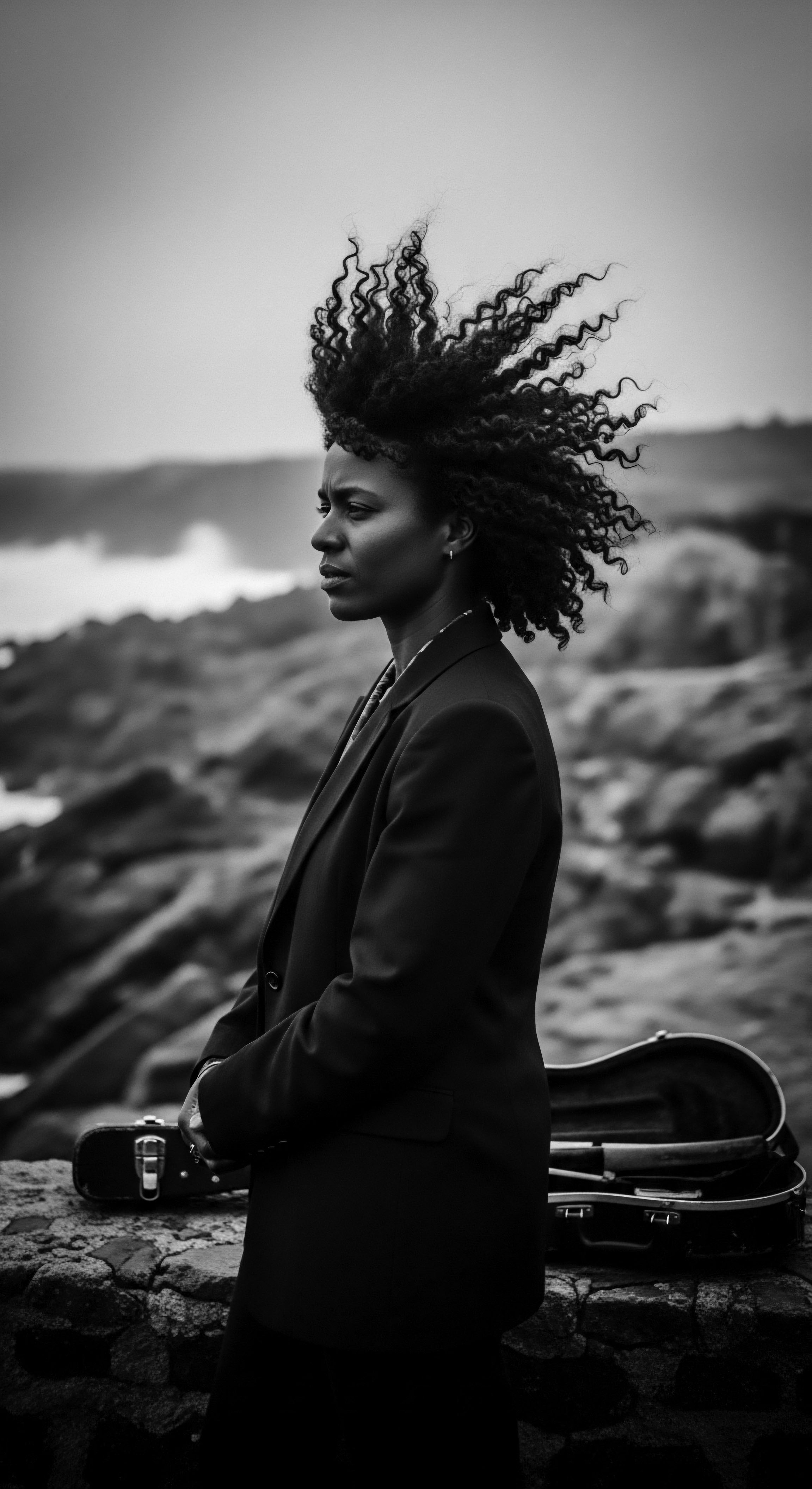
The Historical Trajectory of Hair Coverings
The practice of covering hair has a deep historical resonance across African cultures, long before colonial impositions. In many Sub-Saharan African societies, head wraps were integral markers of age, marital status, wealth, and spiritual belief. For instance, the Yoruba people of Nigeria refer to their elaborate wraps as Geles, while Ghanaians use the term Dukus, and in Southern Africa, it is often called a Doek. These coverings were not only ceremonial but also offered practical protection from the sun, dust, and heat.
The historical example of the Tignon Laws in Louisiana during the late 18th century, particularly in 1786, stands as a stark testament to the complex interplay of protection and oppression. Spanish colonial governor Esteban Rodriguez Miró mandated that Afro-Creole women wear a Tignon, a turban-like head wrap, to undermine their perceived “exotic” allure and social standing (Hall, 1995). Yet, enslaved and free Black women transformed this symbol of forced subservience into a powerful act of resistance. They styled their tignons with vibrant colors and elaborate folds, turning a tool of oppression into a badge of identity and beauty, sometimes even conveying coded messages. This transformation underscores how protective measures often became acts of cultural preservation and defiance.
Head coverings have traversed centuries, from symbols of royal stature to tools of resistance, always guarding hair from the sun’s unyielding strength.
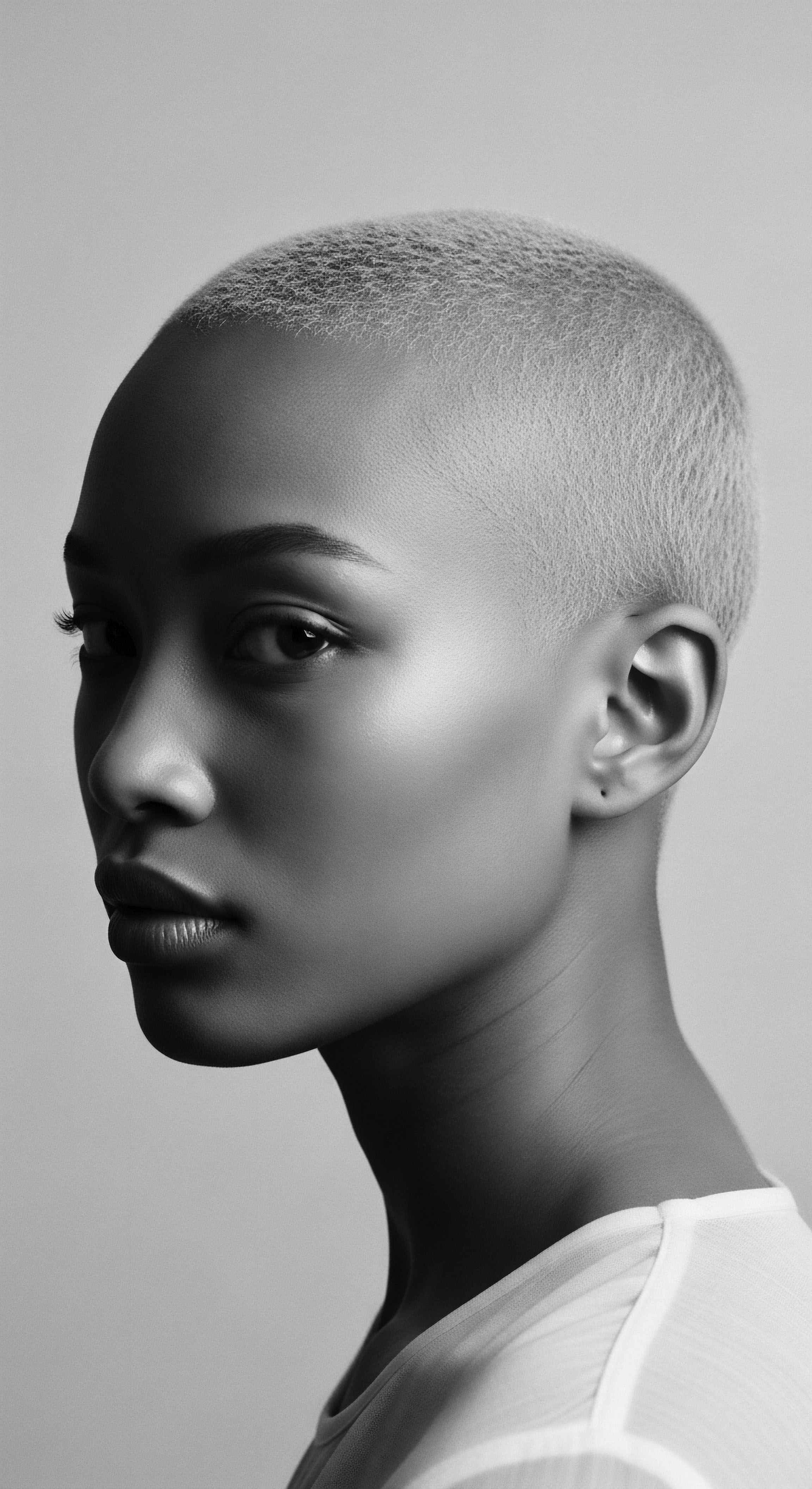
Sun Damage on the Hair Shaft?
How exactly does solar radiation inflict harm upon the hair shaft, and how do coverings intercede? Sunlight primarily damages hair through a process called photo-oxidation, leading to the formation of reactive oxygen species (ROS). These free radicals attack the hair’s protein structure, particularly keratin, causing a breakdown of disulfide bonds which maintain hair’s strength and elasticity. Hair exposed to chronic sun becomes dry, brittle, and experiences a reduction in strength.
The cuticle, the hair’s outer layer, is the first line of defense, and UV radiation causes microstructural changes to it, leading to raised scales and increased porosity. This compromised cuticle then allows deeper penetration of UV rays into the cortex, where melanin degradation occurs, resulting in color changes and further protein loss. Head coverings provide a physical barrier that absorbs, reflects, or disperses these harmful rays, preventing them from ever reaching the hair shaft. This simple physical intervention is remarkably effective at mitigating photo-oxidative damage.
- Eumelanin ❉ This darker pigment, prevalent in black and brown hair, offers significant natural photoprotection by absorbing UV radiation and neutralizing free radicals.
- Cuticle Integrity ❉ The outermost layer of the hair, when healthy, acts as a protective shield, but UV exposure can lift its scales, making the hair vulnerable.
- Disulfide Bonds ❉ These strong bonds within the hair’s protein structure are susceptible to breakage from UV radiation, leading to weakened strands.

The Fabric of Protection
The efficacy of a head covering in providing sun protection rests upon the properties of the fabric itself. Fabric construction, color, and fiber type all contribute to its Ultraviolet Protection Factor (UPF). UPF measures how much UV radiation a fabric allows to pass through. A UPF 50+ rating, for instance, means that less than 2% of UV radiation reaches the protected area.
Densely woven materials, such as denim or certain synthetics, offer superior protection compared to loosely woven or thin fabrics. Darker colors, by absorbing UV radiation, tend to provide better protection than lighter shades.
| Material Type Cotton (unbleached, dense weave) |
| Traditional Context Widely accessible, comfortable in warm climates, historically used for everyday wraps. |
| Sun Protection Qualities Contains natural lignins that absorb UV. Densely woven cotton offers good UPF. |
| Material Type Silk (tightly woven) |
| Traditional Context Used for luxury or ceremonial wraps, often valued for its smooth texture. |
| Sun Protection Qualities Can be highly protective due to reflection of radiation, especially in satiny finishes. |
| Material Type Wool (dense weaves) |
| Traditional Context Found in cooler climates or for thicker wraps, offers natural durability. |
| Sun Protection Qualities Densely woven wool provides good UV protection. |
| Material Type Synthetic Fabrics (Polyester, Nylon) |
| Traditional Context Modern textiles, not traditional to most ancestral practices, but increasingly common. |
| Sun Protection Qualities Naturally UV-resistant due to dense polymer structure; often treated for enhanced UPF. |
| Material Type The selection of materials for head coverings has always balanced practical availability with the inherent protective qualities of the fabric, a harmony of heritage and function. |
Historically, communities used readily available natural fibers, adapting their weaves and layering to maximize protection. The concept of sun protection was inherent in their material choices and styling techniques. Modern textile science validates much of this ancestral understanding, demonstrating how fiber density and color directly translate into measurable UPF ratings, offering compelling validation of long-standing practices. The continuing use of head coverings in many cultures thus bridges the ancient with the contemporary, providing vital protection for textured hair.
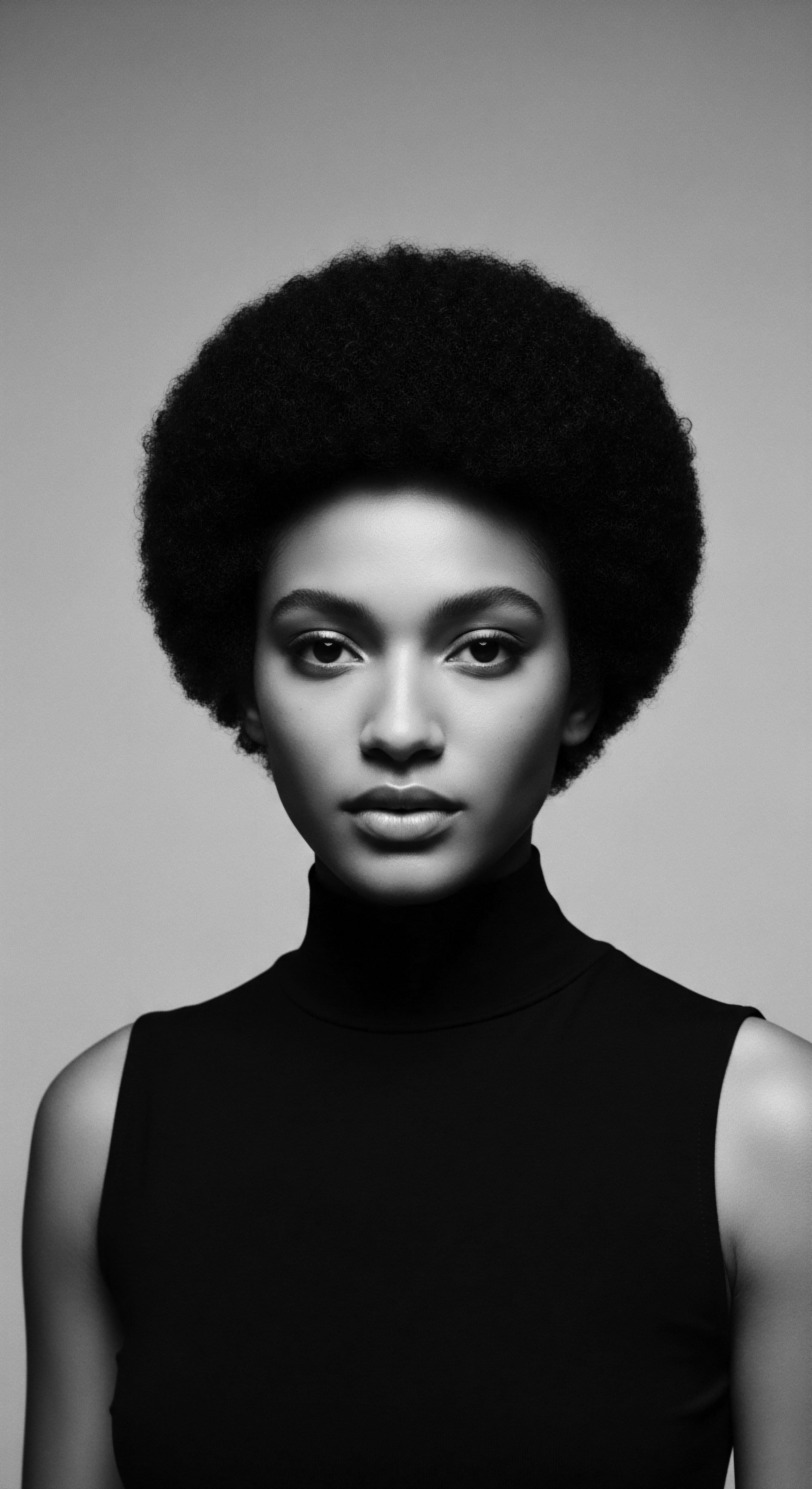
Relay
The legacy of head coverings extends beyond simple physical defense; it stands as a profound cultural statement, a continuum of care and identity transmitted across generations. The inherent vulnerability of textured hair to environmental elements, particularly solar radiation, finds its sophisticated response in the enduring tradition of head coverings. This practice, steeped in heritage, transcends mere aesthetics; it reflects an advanced, intuitive understanding of environmental stressors and their impact on hair’s biological structure, offering a holistic model of ancestral wellness that modern science now echoes with compelling data.
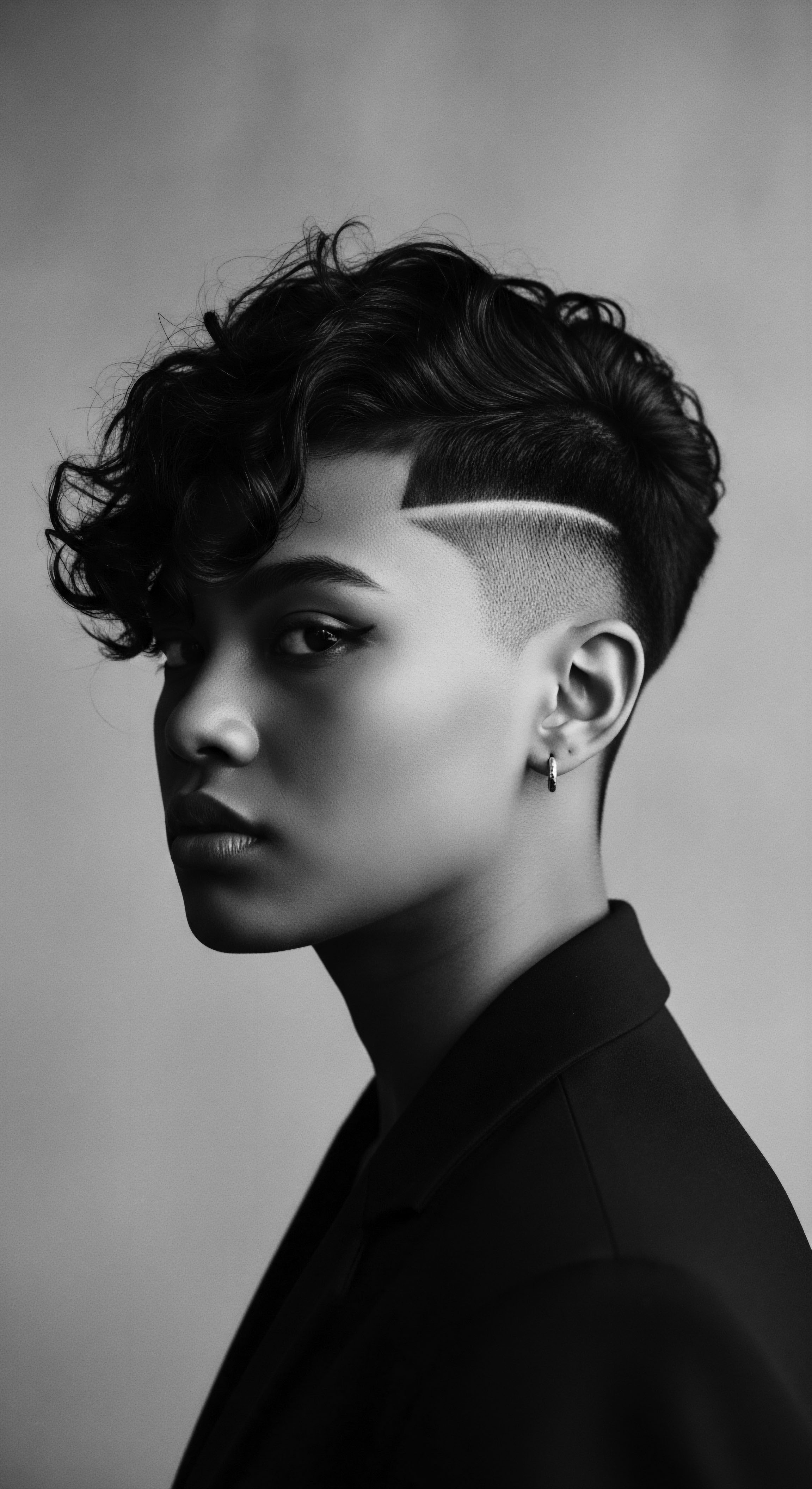
How Does Melanin’s Role in Sun Protection Interact with External Coverings?
The presence of melanin, particularly Eumelanin, in textured hair offers a degree of endogenous photoprotection, absorbing and filtering ultraviolet radiation, thereby acting as a natural shield. However, this intrinsic defense is not absolute. Prolonged or intense UV exposure can still degrade melanin, leading to color changes and a reduction in its protective capacity. Moreover, the very process by which melanin defends the hair can, over time, contribute to its degradation, manifesting as hair lightening or dullness.
Head coverings provide an external, impenetrable layer of defense, effectively reducing the overall UV dose the hair receives. This complementary protection is particularly significant for textured hair, which, due to its structural characteristics, might experience certain environmental vulnerabilities. While melanin offers a chemical defense, the physical barrier of a head covering provides an immediate and comprehensive interception of solar energy, preserving both the hair’s pigment and its protein integrity.
The cumulative effect of sun exposure on hair, a process often termed “weathering,” can be significant. It leads to structural impairment of the hair shaft, including the loss of lipids from the cuticle and the degradation of proteins. This can result in increased frizz, reduced softness, and heightened susceptibility to breakage. The combination of melanin’s natural filtration with the external shield of a head covering creates a robust, multi-layered defense system.
This strategy mirrors a long-held ancestral understanding that comprehensive protection involves both internal resilience and external vigilance. The efficacy of head coverings, therefore, cannot be overstated as a primary method of safeguarding textured hair from solar damage, a practice deeply ingrained in the continuum of ancestral hair care.
The collective wisdom of generations recognized that while nature provides inherent defenses, supplementary protection is essential for sustained hair health in sun-drenched environments.

Fabric Science and the Ancestral Choice of Textiles
Modern textile science validates the efficacy of traditional head coverings through the lens of Ultraviolet Protection Factor (UPF) ratings. A fabric’s ability to block UV radiation is influenced by several factors ❉ fiber type, weave density, color, and certain treatments. Densely woven fabrics, regardless of material, offer a more effective barrier by minimizing the gaps through which UV rays can pass. Darker colors absorb a greater spectrum of UV light, preventing it from reaching the hair.
Historically, communities often used locally available natural fibers such as cotton, wool, or silk, understanding through observation and experience which materials provided better shielding. For example, unbleached cotton contains natural lignins that absorb UV, while shiny silks can reflect radiation. The selection of these materials was not arbitrary; it was a practical response to environmental demands, interwoven with cultural aesthetics.
Consider the traditional textiles across African lands. Many wraps were crafted from hand-loomed fabrics, often characterized by their compact weaves and vibrant, deep colors, which inherently boosted their protective qualities. This pre-scientific understanding of textile properties, passed down through oral tradition and practical demonstration, directly translates to the UPF principles we measure today. The enduring practice of wrapping hair is thus a testament to an ancestral textile science, a deep reservoir of knowledge that continues to offer contemporary relevance.
- Weave Density ❉ A tighter weave creates a denser physical barrier against UV radiation, allowing fewer rays to penetrate.
- Fabric Weight and Thickness ❉ Generally, heavier and thicker fabrics offer greater UV protection by virtue of their material mass.
- Color Pigmentation ❉ Darker and brighter colors absorb more UV radiation than lighter shades, thus providing enhanced protection.
- Fiber Composition ❉ Some fibers, like certain synthetics (polyester, nylon) and even natural fibers with specific treatments, possess inherent UV-resistant properties.

Connecting Ancient Practices to Modern Understanding ❉ The Himba and Otjize
The Himba people of Namibia offer a powerful example of ancestral wisdom in environmental protection, extending beyond head coverings to a comprehensive system of hair and skin care. While they are renowned for their elaborate hairstyles coated in Otjize, a paste of red ochre, butterfat, and aromatic resins, their practice illuminates a multi-pronged approach to sun defense. The otjize paste, applied daily to both skin and hair, serves as a natural sunblock, effectively shielding against harsh UV rays. This ancient cosmetic not only acts as a protective barrier but also contributes to hygiene in an arid environment where water is scarce.
The Himba’s intricate braids, heavily laden with otjize, provide a dense, coated mass that functions as a physical barrier against the sun, much like a thick head covering. This tradition underscores the profound connection between cultural practice, aesthetic expression, and practical environmental protection. It represents a living case study where ancestral knowledge, honed over centuries, predates and parallels modern scientific understanding of UV filters and protective barriers. The Himba’s commitment to otjize is a testament to the resilience of heritage, showcasing a deep, embodied knowledge of living in harmony with nature’s challenges, simultaneously protecting their hair and maintaining their distinct identity. This practice, passed from mother to daughter, is not merely about beauty; it is a ritual of survival, a continuous dialogue with the environment.
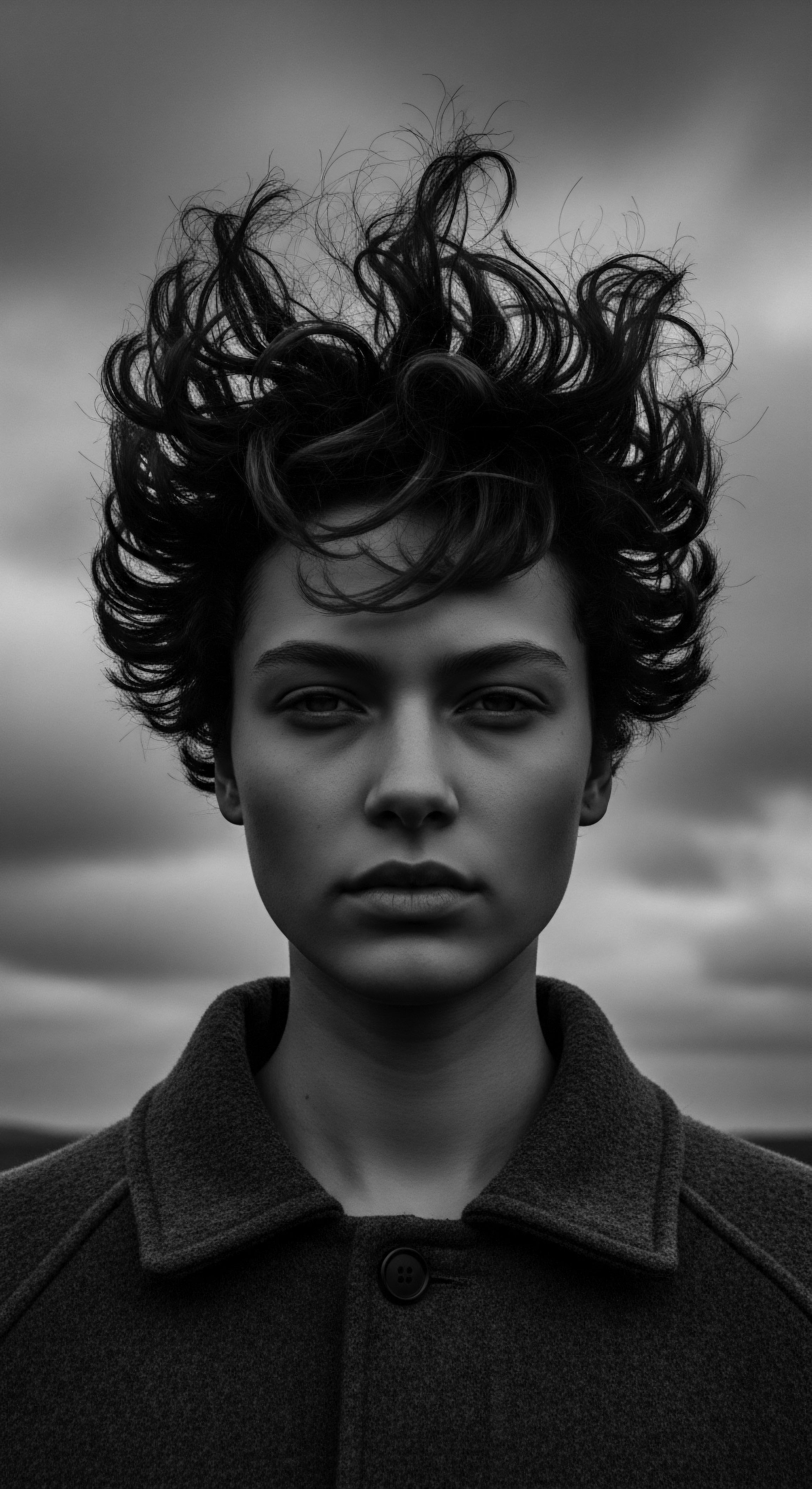
Reflection
The enduring presence of head coverings in the narrative of textured hair is more than a fleeting trend; it is a testament to an ancestral language of care, a continuous whispered conversation between the sun and the strand. From the forced modesty of the Tignon Laws, transformed into a declaration of selfhood, to the intuitive brilliance of Himba women anointing their coils with otjize, we perceive a singular truth. Our textured hair, a vibrant helix of our heritage, has always found sanctuary and strength beneath the purposeful drape of cloth. This living archive, the ‘Soul of a Strand,’ invites us to remember that protection is not simply about shielding from harm, but about honoring a legacy of wisdom, resilience, and unapologetic beauty that continues to shape our self-expression in a world that forever seeks to understand its vibrant depths.
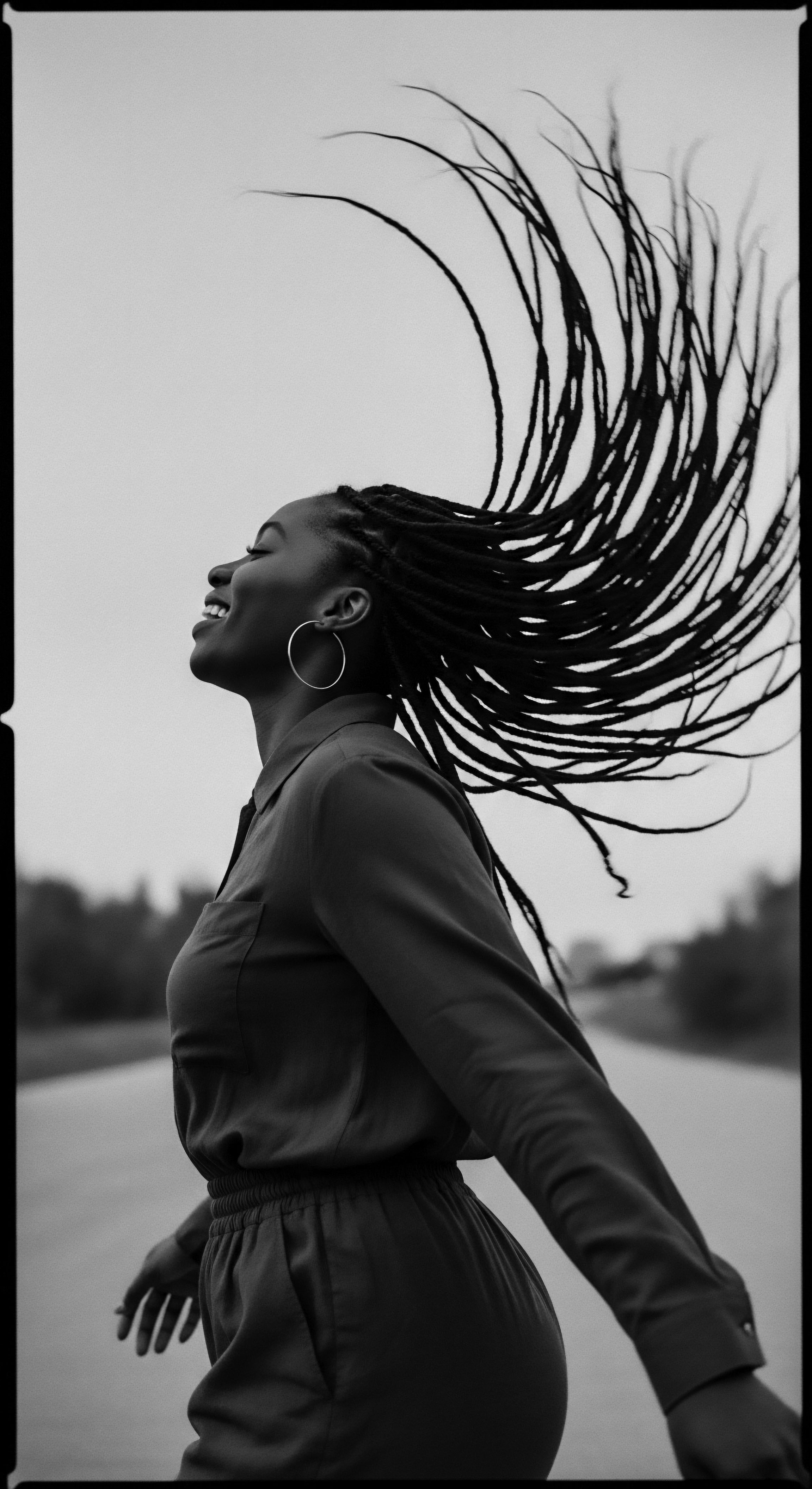
References
- Katsande, R. (2015). The history & meaning of head wraps across Africa. Wilderness.
- sonson. (2021). The History of Headwraps and Black Culture. sonson.
- Assessa. (2022). Protection of Hair against Damage Caused by Photochemical Oxidation. Assessa.
- Popovic, N. (2014). UV damage of the Hair. ResearchGate.
- Green Views Residential Project. (2022). The History of the African head wrap. Green Views Residential Project.
- Herzig, A. (2020). Photo Protection for Hair – Protect Your Hair From UV Sunlight. LearnSkin.
- The Skin Cancer Foundation. (n.d.). Sun Protective Clothing. The Skin Cancer Foundation.
- Bebrų Kosmetika. (2024). The Power of Hair in African Folklore ❉ Rituals and Traditions. Bebrų Kosmetika.
- Hall, G. (1995). The Tignon Laws.
- The History of Headwraps ❉ Then, There, and Now. (2024).
- Healthline. (2020). Melanin for Hair ❉ What Role It Plays & How to Increase Production. Healthline.
- Dr.UGro Gashee. (2020). Red Ochre as a Skin and Hair Sunblock an Old Himba Discovery. Dr.UGro Gashee.
- Centre Clauderer. (n.d.). Melanin ❉ How does it affect hair?. Centre Clauderer.
- Wimpole Clinic. (n.d.). UV Hair Protection ❉ How to Keep Your Hair Safe From the Sun. Wimpole Clinic.
- JD Institute of Fashion Technology. (2021). HEADWRAPS ❉ HISTORY AND EVOLUTION. JD Institute of Fashion Technology.
- REI Expert Advice. (n.d.). How to Choose Sun Protection UPF Clothing. REI.
- Green People UK. (n.d.). Myrrh – the incredible story of the Himba tribe. Green People UK.
- The Guardian Nigeria News. (2022). Otjize ❉ The Red Beauty Miracle Of The Himba People. The Guardian Nigeria News.
- Coolibar. (n.d.). Explore Our Fabrics ❉ Engineered for Sun Safety UPF 50+. Coolibar.
- Wikipedia. (n.d.). Sun protective clothing.
- Redalyc. (n.d.). UV-protective compound-containing smart textiles ❉ A brief overview.
- Beautycon.com. (2019). What a Curl Chemist Wants You to Know About the Sun. NaturallyCurly.
- MDPI. (n.d.). Performance and Mechanism of Hydrolyzed Keratin for Hair Photoaging Prevention.
- MDPI. (n.d.). Exploring the Use of Natural Ingredients for the Protection of Textured Hair from Ultraviolet Radiation ❉ An In Vitro Study.
- BSB MEDIA. (n.d.). Black Beauty Heritage ❉ History of Headwraps and How to Style Them Today.
- African head wrap. (n.d.). THE AFRICAN WRAPS HISTORY. WordPress.com.
- Cealle Creative. (2025). The Legacy of Headwraps ❉ Honoring Black History. Cealle Creative.
- Toine IJsseldijk. (n.d.). The Himba Tribe ❉ Otjize. Photography by Toine IJsseldijk.
